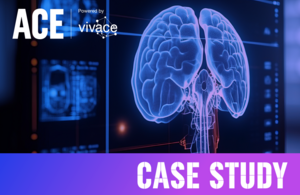Using AI to diagnose Parkinson’s - and speed up future research
Artificial intelligence-enabled diagnosis could accelerate research by months and possibly years.

The Accelerated Capability Environment (ACE) worked with the NHS’s AI Skunkworks to develop a tool to help speed up diagnosis of Parkinson’s Disease by using artificial intelligence to automatically identify areas of interest for manual follow-up.
Parkinson’s Disease is the world’s fastest growing neurological disorder, with over 10 million diagnoses globally – a number that is expected to double over the next 50 years. It is a progressive disease, and ageing is the biggest risk factor.
Accurate diagnosis and grading from brain tissue after death is necessary to more fully research and understand pathological causes and develop potential new treatments. However, brain changes can only be assessed manually, and the time required – 4 to 6 hours – is hindering the speed and scale of research into causes and potential new treatments.
There is a shortage of trained neuropathologists globally and partly automating their job would increase the number of cases each can examine, saving time and costs.
Automatic classification from digitised brain images
Parkinson’s UK, the largest membership-based charity in the world, was a partner on this 12-week project and enabled access to the charity’s brain bank at Imperial College London – which has more than 1,300 brains from people with Parkinson’s as well as healthy donors. The charity produced a dataset containing 401 digitised images of brain sections immunostained to detect alpha-synuclein (a-syn), a protein which is the pathological marker of Parkinson’s, including 100 control cases from healthy donors.
Polygeist from ACE’s Vivace community achieved a diagnosis breakthrough by repurposing existing technology to exclude other types of brain matter that were not needed for this process. Then, they synthetically stained slides of brain tissues using the iDeepColour neural network, which highlights and stains areas affected by a-syn.
Once processed, areas of interest turned bright green, making them quickly identifiable. Chopping up the original image, and slicing it into squares, meant counting the green areas also gave a strong indication of disease density.
Developing state-of-the-art accuracy
This work enabled Polygeist to go on to develop a proof of concept classifier which achieved around a 92% accuracy hit rate on automatically classifying Parkinson’s from digitised images of brain sections, with no false alarms – remarkably close to a perfect score.
Applying this process meant moving from assessing one brain in 4 to 6 hours to minutes, which allows neurologists to focus on more complex cases. The quality of the tool is approaching viability for real-world applications.
Next steps include enhancing this process to differentiate stages of disease, as well as looking into whether proteins which indicate dementia can also be identified. Additionally, there is also potential to use this technique with brain scans on live patients in the future.